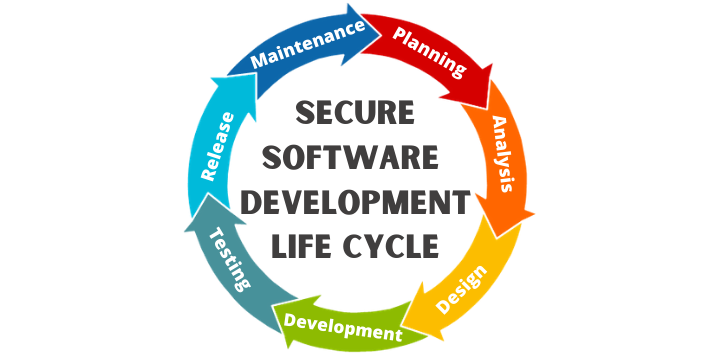Security Challenges in Mobile App Development and Solutions for 2024
The tech world is rapidly advancing, and mobile app development sits at the core of this innovation and convenience. Yet, with progress comes new security challenges that developers must adeptly tackle. As 2024 unfolds, the mobile app security landscape grows increasingly intricate and demanding.
The mobile application security market was valued at $5.2 billion in 2023. Looking ahead, from 2024 to 2032, this sector is expected to skyrocket with an impressive CAGR, potentially exceeding 22%. This blog delves into these mobile app development challenges and proposes tactical solutions to strengthen app security.
#1 Evolving Malware
● Challenge:
The primary issue with evolving malware lies in its heightened sophistication and adaptability. Modern malware can secretly invade apps, often escaping detection, and execute a variety of harmful actions.
These actions might include pilfering critical user information such as login details and financial data, commandeering user accounts, or even seizing control of the entire device. Today’s malware can bypass basic security checks, posing severe risks to user privacy and app functionality.
● Solution:
Developers must adopt a proactive, alert approach. Using code obfuscation can thwart attackers’ attempts to reverse-engineer the app. Encrypting data ensures that intercepted information remains indecipherable.
Regular security assessments are crucial to identify and remedy vulnerabilities susceptible to malware. Staying updated with the latest malware developments and accordingly enhancing the app’s security measures is essential for staying ahead of potential threats.
#2 Privacy Concerns
● Challenge:
With increasing awareness of privacy matters, users seek more transparency and control over their data. The developer’s challenge is to strike a balance between app functionality and user privacy, guaranteeing ethical and legal data usage. Apps that mishandle user data or lack transparency in data practices face user distrust and potential legal complications.
● Solution:
Developers should adopt data minimization, collecting only essential data. Anonymizing the gathered data can provide additional privacy protection.
Crucial, too, is the implementation of explicit user consent mechanisms, where users are informed about the nature and purpose of data collection. Adhering to international data privacy laws like GDPR is imperative to ensure legal compliance and foster user trust.
#3 Supply Chain Attacks
● Challenge:
Supply chain attacks are particularly challenging as they target the app development process. Attackers compromise apps through third-party libraries or development tools, embedding malicious code unbeknownst to developers. Detecting these attacks is difficult, and they can jeopardize not just one app but all apps developed using the compromised tool or library.
● Solution:
Developers should rigorously scrutinize and monitor the third-party components they employ. Regular security reviews and updates of these tools are vital. Implementing a secure software development life cycle (SDLC) can aid in early vulnerability detection. Utilizing code signing certificates ensures that deployed code is from a trusted source and hasn’t been altered.

#4 Phishing Attacks
● Challenge:
Phishing attacks in mobile apps increasingly deceive users into disclosing sensitive information through seemingly authentic requests. Every day, a staggering 3.4 billion malicious emails hit inboxes, making phishing surpass all other forms of cybercrime.
These attacks are growing more crafty, using social engineering to abuse users’ trust. On mobile devices, the risk is heightened due to smaller screens and the casual contexts in which these devices are typically used.
● Solution:
Developers are key in safeguarding users against phishing. Implementing strong authentication, such as two-factor authentication, greatly lowers these attacks’ success rates.
Educating users on phishing risks through in-app alerts and guidance is crucial. Developers must also be careful with external links in apps and ensure secure validation of user-provided data.
#5 Lack of Security Awareness Among Developers
● Challenge:
A significant hurdle in mobile app development is the general lack of security training among developers. Without a solid grasp of security practices, developers might unintentionally create vulnerabilities, leaving the app open to attacks.
● Solution:
The remedy lies in boosting developers’ security education. Training should comprehensively cover secure coding, awareness of common vulnerabilities and their prevention, and staying abreast of the latest security trends.
Developers should learn threat modeling to foresee potential attacks and incident response to manage security incidents effectively. Regular security-focused training sessions can substantially elevate the security level of mobile apps.
#6 Weak Session Handling
● Challenge:
Poor session management exposes mobile apps to threats like session hijacking and man-in-the-middle attacks. These issues arise when session tokens are not properly handled, giving attackers opportunities to intercept or reuse these tokens.
● Solution:
Employ stringent session management tactics. Use secure, distinct tokens for each session, and ensure their secure transmission. Implementing session timeouts minimizes the risk of token exploitation.
Additionally, using SSL/TLS encryption secures session token transmission, preventing interception. Regularly refreshing and verifying tokens further bolsters security.
#7 Inadequate Testing and Monitoring
● Challenge:
Inadequate testing and monitoring leave mobile apps vulnerable to unnoticed security gaps, making them prone to attacks. Comprehensive testing and ongoing monitoring are essential for maintaining app security after deployment.
● Solution:
Create an exhaustive testing plan that includes consistent security evaluations, like penetration tests and vulnerability scans. Utilize continuous monitoring tools to identify and alert about unusual activities or potential security intrusions in the app. Regularly updating testing procedures to address new security threats is among the best mobile app security best practice.
#8 Insecure Communication
● Challenge:
When data travels between an app and its back-end servers without proper safeguards, interception by unauthorized entities becomes a real threat. This breach can expose confidential information, leading to grave concerns over privacy and security.
● Solution:
To shield these communications, the implementation of SSL/TLS encryption is key. By encrypting data in transit, only the designated receiver can interpret it. Keeping these encryption methods up-to-date is vital to fend off emerging security loopholes. Additionally, certificate pinning thwarts man-in-the-middle attacks, ensuring server certificates are legitimate.
#9 Lack of Security in Third-Party Services
● Challenge:
Mobile applications often depend on external services and APIs. These elements can introduce vulnerabilities if they are compromised or lack robust security.
● Solution:
It’s imperative to conduct extensive security checks on all external services and APIs before incorporating them. Keeping these services updated with the latest security enhancements is equally important. Vigilance in monitoring for vulnerabilities and having backup plans ready for compromised service providers are crucial practices.
Emerging Trends in Mobile Application Safety for 2024
● The rise of DevSecOps
DevSecOps, blending Development, Security, and Operations, infuses security into every phase of app development. This approach deviates from traditional methods where security assessments happen post-development.
In DevSecOps, security is a persistent focus, from conception to deployment, ensuring it’s woven into the fabric of the development lifecycle. The ascendance of DevSecOps in 2024 signals a paradigm shift in securing apps, fostering more robust and resilient software.
● The use of AI and ML in security

The integration of Artificial Intelligence and Machine Learning in mobile app safety is rising. These technologies autonomously counteract threats, foresee potential breaches, and streamline routine security tasks. By analyzing vast data sets, AI and ML can spot irregularities, like unusual user actions or traffic surges, leading to quicker, more effective threat management.
● Increasing adoption of blockchain technology
Blockchain technology, known for decentralization, transparency, and permanence, is increasingly applied in mobile app security. Useful for creating tamper-proof transaction logs, managing digital identities, and preserving data integrity, blockchain reduces risks like data alteration and central points of failure. Its decentralized nature makes it a compelling option for securing sensitive mobile app transactions and information.
● Sophisticated biometric measures for enhanced security
Biometric security techniques such as fingerprint scanning, facial recognition, and iris scanning are gaining ground in mobile app protection. These methods offer a fortified defense over old-school passwords or PINs due to their complexity and difficulty in duplicating.
Looking at 2024, we’re set to see even more refined biometric security features. These might include behavioral biometrics, which scrutinizes user behavior patterns for verifying identities.
● The rise of SASE in cybersecurity
Secure Access Service Edge, commonly known as SASE, stands as a burgeoning concept in cyber defense. It melds network security tasks with wide area networking (WAN) capabilities.
This fusion is particularly vital for mobile apps that must access enterprise resources with ironclad security. SASE introduces a scalable, cloud-native network architecture. It guarantees robust protection for mobile apps that tap into corporate data, regardless of where the user may be.
Conclusion
Stepping through 2024, sticking to a thorough mobile app security checklist becomes increasingly vital. Understanding and tackling these mobile app development challenges lets developers whip up secure, robust, and friendly apps.
Riding the wave of the latest security trends and best practices doesn’t just ward off today’s digital dangers. It also gears up for the twists and turns in the dynamic world of mobile app development.
